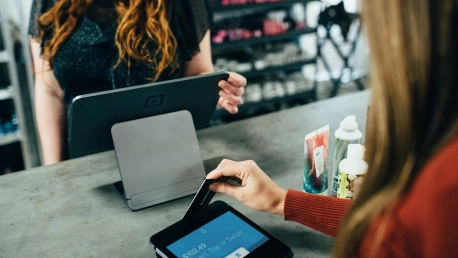Buy Now Pay Later (BNPL) is a short-term financing and payment option, enabling customers to purchase products and services and pay for them in equal installments over weeks or months. As many shoppers cannot use traditional financings, such as short-term loans or credit cards, BNPL allows them to finance goods or services by simply registering an account with a verified provider.
The BNPL payment method has become a buzz topic among E-commerce businesses. To cater to consumer preferences and provide convenient, tailored payment options to encourage shoppers to purchase online, stores must stay updated with these trends. Fortunately, BNPL makes this possible. However, adopting this method poses many challenges for merchants to overcome.
This article will explore the BNPL payment method, the current market size, the advantages it offers E-commerce stores, and the challenges businesses must address to generate significant ROI.
What Is the Buy Now, Pay Later (BNPL) Model?
BNLP is a payment model which allows consumers to buy items and pay the total cost in equal installments over weeks or months. Essentially, BNLP models are short-term customer financing —shoppers can conveniently buy products without paying the total amount upfront.
However, most BNPL models require the buyer to provide a down payment ranging from 10 to 25% of the product price. Once the down payment is made, shoppers must settle the remaining amount through a series of installments over a few weeks or months.
E-commerce businesses can configure BNLP payments to automatically debit accounts on an agreed-upon date, or request payments through a bank account transfer or check.
There are three parties involved in BNPL models:
- Customer: The BNLP charges customers an upfront fee, such as 25% of the value or, in some cases, nothing, and repaying the outstanding balance through fixed installments. This option is appealing to shoppers, especially those who may not have access to other forms of credit, such as credit cards or short-term loans. Consumers often do not have to pay interest on their BNPL payments, encouraging them to leverage this payment model.
- Merchant: In a BNLP model, the merchant is the E-commerce business that offers this payment option. Online stores constantly need innovative strategies to increase customer basket value and reduce shopping cart abandonment rates. Fortunately, BNLP is a solution to these challenges, as shoppers are more likely to buy more products and complete their purchases by only paying a percentage of the total amount upfront.
- BNLP Provider: BNLP providers are financial lenders that partner with merchants to offer this payment model to customers. These providers are responsible for granting credit and collecting customer payments, thereby assuming the risk of non-payment. On the merchant’s end, BNLP lenders pay businesses a discounted price of the total purchase amount. On the consumer’s end, these lenders collect installments equating to the entire purchase price.
Furthermore, BNLP models are increasingly becoming popular, and we will delve into the market size in the following section.
The BNPL Market Size Is Expected to Grow Rapidly In the Following Years
The BNPL market size was $90.60 billion in 2020 and is expected to reach $3.9 trillion by 2030, according to an Allied Market Research report. This data indicates that the BNPL market will grow at a compound annual growth rate (CAGR) of 45.7%.
Furthermore, this report highlights the primary factors driving the market’s expansion, including the affordability and convenience it offers for purchasing home and lifestyle products. In addition, there is an increased demand for delayed payments in online purchases, and a rise in consumer spending on luxury products, which provide lucrative opportunities for the BNLP sector. While most retailers leveraged this payment model in 2020, the healthcare and wellness industry will experience the most growth in the following years due to high treatment costs.
The Advantages of Implementing BNPL
The BNPL model provides many advantages for merchants, such as increased sales, as so many customers prefer this payment option. These stores can also encourage high-value purchases, and improve customer satisfaction through optimized shopper purchasing control and convenience. Here is an overview of these advantages and how they impact E-commerce businesses.
Increased Sales
The BNPL market segment boasts an extensive user base of over 350 billion users worldwide, with 60% of online shoppers opting for this payment method. As consumers favor this payment model, E-commerce stores have greater opportunities to close sales. According to research by eMarketer, almost half of Gen Z shoppers will use BNPL by 2025, with Millennial and Gen X buyers closely behind at 40 and 30%, respectively.
Given these statistics, E-commerce stores targeting Gen Z, Gen X, and Millennial audiences must prioritize BNPL adoption to gain accessibility to this market. In addition, data by ECOMMPAY indicates that 25% more customers are likely to use BNPL this year, and products, such as electronics, clothes, and shoes, and toys will gain the most interest from BNPL shoppers.
High-Value Purchases
Customers using BNPL are more likely to purchase more products because they are not paying the total price for each item upfront.
For instance, a shopper with a budget of $400 browses an E-commerce store for a high-end blender and discovers one for $400. However, BNPL is available, and the customer can pay a 20% down payment of $80, and the remaining $320 in four installments of $80 over four months. As the shopper initially had a purchasing budget of $400, this encourages them to buy more items because the upfront cost is not nearly half of what they planned to spend. So, instead of paying $400 upfront for one product, they can purchase three for $400 now and four $400 installments later.
Moreover, while the shopper is paying less at the moment of purchase, the BNPL provider compensates the E-commerce store for the three products and assumes the responsibility of collecting the installment payments. In other words, the E-commerce store benefits significantly from this approach. First, they have sold three items instead of one, and second, they do not have to worry about customers paying their installments on time.
A survey by Empower confirms BNPL’s ability to drive higher purchases—BNPL transactions have steadily increased by 39% year-over-year (YoY). This figure doubled between February 2022 and 2023, at $2.6 million and $6.4 million respectively.
Improved Customer Experience
Offering customers more payment options provides them with more purchasing control, improving their shopping experience and allowing them to opt for convenient solutions, such as BNPL. According to research from Bankrate, 56% of BNPL shoppers prefer this payment method over credit cards because they perceive it to be much more flexible and easier for purchasing products. In addition, 38% of these BNPL users say these services could potentially replace their credit cards altogether.
E-commerce stores must deliver customer-centric purchasing experiences to drive consistent sales. BNPL can make this possible, and most providers offer simple and quick shopper account signup. In other words, online stores can also target buyers that are not current BNPL users.
The Challenges Businesses Must Consider for BNPL Models
In contrast to the several benefits of BNPL models for businesses, merchants also face many challenges. This payment model can lead to revenue loss if customers shop directly through the provider’s website. The return policies for items purchased through BNPL are also complicated and not as regulated as other payment options. In addition, BNPL integration and transaction processing are costly. These are the challenges of BNPL and how they affect businesses.
The Potential of Lost Revenue
A significant challenge businesses must overcome is the risk of losing sales when customers choose to shop directly through the BNPL provider’s platforms. Although the shopper would still purchase the item they intended to, they will not be exposed to other products or marketing and sales tactics, such as upselling and re-selling on the merchant’s website.
As a result, this may lead to lower cart values while giving customers access to competitors available through the BNPL provider’s platform. Unfortunately, E-commerce businesses have limited control over this challenge, as it ultimately relies on how the BNPL platform operates and their ability to minimize revenue loss and customer exposure to competitors.
Complicated Return Policies
In addition to a potential revenue loss, merchants have highlighted that a significant challenge of BNPL is handling product returns. E-commerce businesses do not have control over customer installments—the BNPL provider manages these funds. Consequently, when shoppers want to return an item, they must communicate with both the merchant and the BNPL provider to initiate the refund or stop the installments. However, if the consumer has already paid interest on their payment, the provider will not reimburse this amount.
Online stores find it challenging to ensure a seamless return experience because they have no control over how the BNPL lender handles customer service. The BNPL model also does not have the same return regulations and customer protection as other payment models—consumers cannot dispute a payment for goods or services that were not delivered as expected. And on-time payments do not positively impact a buyer’s credit score like credit cards, yet default payments count against them.
Costly Integration and Processing Fees
BNPL models are costly to integrate, and providers charge varying fees to process transactions. According to Grant Thornton, E-commerce businesses pay between 2 and 8% percent per BNPL transaction, above the 1.25 to 1.50% for down payments paid via credit cards. This research confirms that BNPL providers generate 90% of their revenue from merchant fees.
Another financial institution, Divido, states merchants pay higher transaction fees for BNPL payments compared to credit cards. However, credit cards do not have the same increase in sales volumes as seen in BNPL models.
On the other hand, research by Guidance on BNPL models among 200,000 retailers severing more than 85 million shoppers confirms this payment option can increase average order value (AOV) by 45%. In addition, these models can help companies achieve a 35% checkout conversion rate, and an average order return rate of 5.4%, compared to the industry standard of 20%.
As BNPL also enables merchants to improve customer experience, all these factors ultimately increase ROI and outweigh the challenges that come with the upfront cost.
In Closing
BNPL models are becoming increasingly popular among consumers, and the market size has a projected CAGR of 45.7% between 2020 and 2030. Merchants can leverage BNPL for several advantages, such as increased sales, as they can target millions of shoppers using this payment method. E-commerce stores can also benefit from improved customer experience and higher value purchases, as consumers find this solution much more convenient and accessible than traditional financing services.
On the other hand, merchants must consider the challenges of adopting BNPL services. They risk losing revenue if customers directly purchase through the provider’s website, and BNPL has complicated return policies that are not as regulated as credit or debit cards. In addition, merchants pay significant fees to integrate BNPL and process transactions. However, BNPL is a promising market, and finding a solution to these challenges or understanding how to minimize them will help E-commerce businesses secure a competitive edge.









